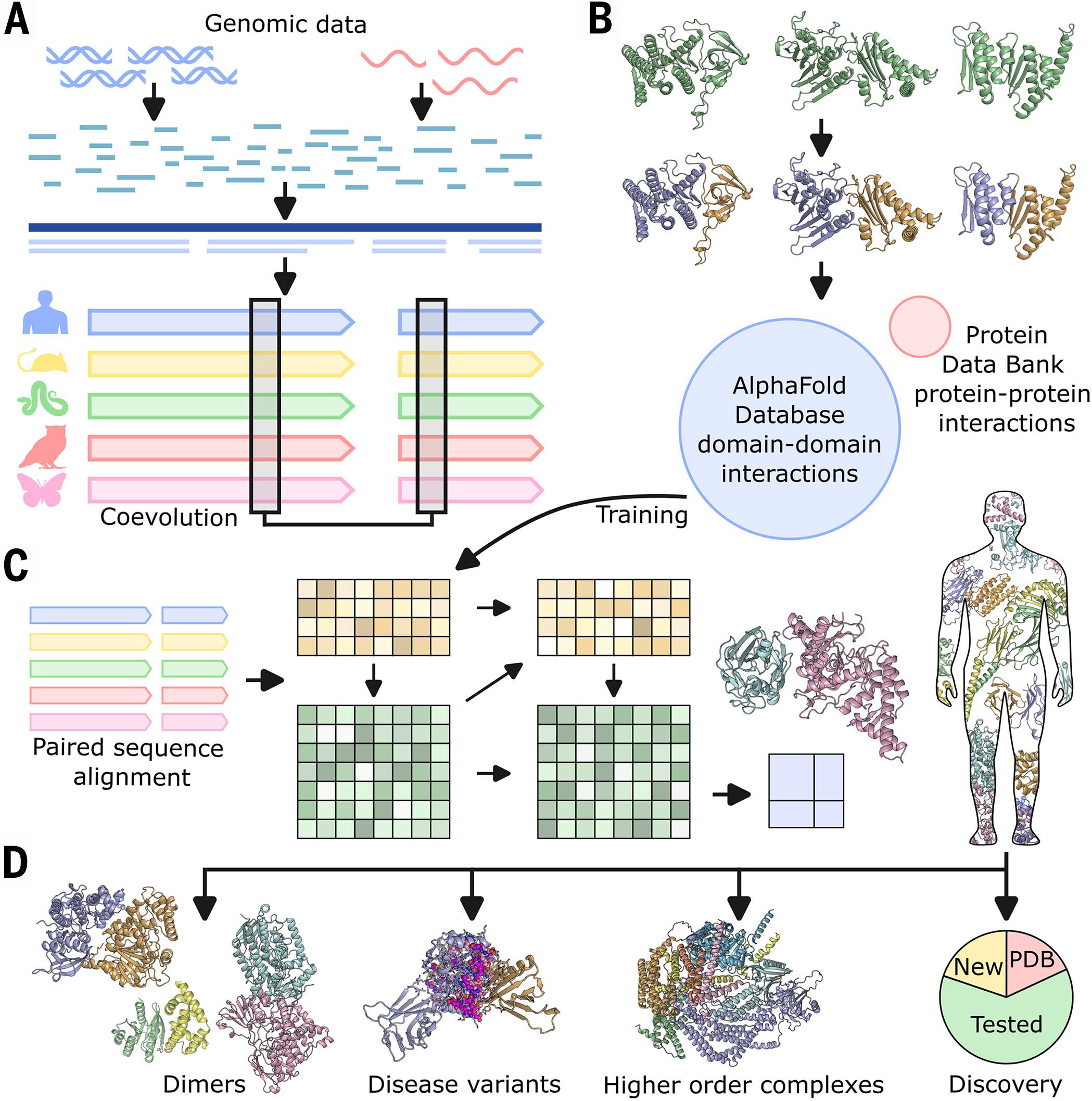Predicting protein-protein interactions in the human proteome
IF 45.8
1区 综合性期刊
Q1 MULTIDISCIPLINARY SCIENCES
引用次数: 0
Abstract
Protein-protein interactions (PPIs) are essential for biological function. Coevolutionary analysis and deep-learning (DL)–based protein structure prediction have enabled comprehensive PPI identification in bacteria and yeast, but these approaches have had limited success for the more complex human proteome. We overcame this challenge by enhancing the coevolutionary signals with sevenfold-deeper multiple sequence alignments harvested from 30 petabytes of unassembled genomic data and developing a new DL network trained on augmented datasets of domain-domain interactions from 200 million predicted protein structures. We systematically screened 200 million human protein pairs and predicted 17,849 interactions with an expected precision of 90%, of which 3631 interactions were not identified in previous experimental screens. Three-dimensional models of these predicted interactions provide numerous hypotheses about protein function and mechanisms of human diseases.

预测人类蛋白质组中蛋白质之间的相互作用。
蛋白质-蛋白质相互作用(PPI)对生物功能至关重要。协同进化分析和基于深度学习(DL)的蛋白质结构预测已经能够在细菌和酵母中进行全面的PPI鉴定,但这些方法在更复杂的人类蛋白质组中取得的成功有限。我们克服了这一挑战,通过从30 pb的未组装基因组数据中获得7倍深度的多序列比对来增强共同进化信号,并开发了一个新的DL网络,该网络训练了来自2亿个预测蛋白质结构的域-域相互作用的增强数据集。我们系统地筛选了2亿对人类蛋白质对,预测了17,849种相互作用,预期精度为90%,其中3,631种相互作用在以前的实验筛选中未被确定。这些预测相互作用的三维模型提供了关于蛋白质功能和人类疾病机制的许多假设。
本文章由计算机程序翻译,如有差异,请以英文原文为准。
求助全文
约1分钟内获得全文
求助全文
来源期刊

Science
综合性期刊-综合性期刊
CiteScore
61.10
自引率
0.90%
发文量
0
审稿时长
2.1 months
期刊介绍:
Science is a leading outlet for scientific news, commentary, and cutting-edge research. Through its print and online incarnations, Science reaches an estimated worldwide readership of more than one million. Science’s authorship is global too, and its articles consistently rank among the world's most cited research.
Science serves as a forum for discussion of important issues related to the advancement of science by publishing material on which a consensus has been reached as well as including the presentation of minority or conflicting points of view. Accordingly, all articles published in Science—including editorials, news and comment, and book reviews—are signed and reflect the individual views of the authors and not official points of view adopted by AAAS or the institutions with which the authors are affiliated.
Science seeks to publish those papers that are most influential in their fields or across fields and that will significantly advance scientific understanding. Selected papers should present novel and broadly important data, syntheses, or concepts. They should merit recognition by the wider scientific community and general public provided by publication in Science, beyond that provided by specialty journals. Science welcomes submissions from all fields of science and from any source. The editors are committed to the prompt evaluation and publication of submitted papers while upholding high standards that support reproducibility of published research. Science is published weekly; selected papers are published online ahead of print.
 求助内容:
求助内容: 应助结果提醒方式:
应助结果提醒方式:


